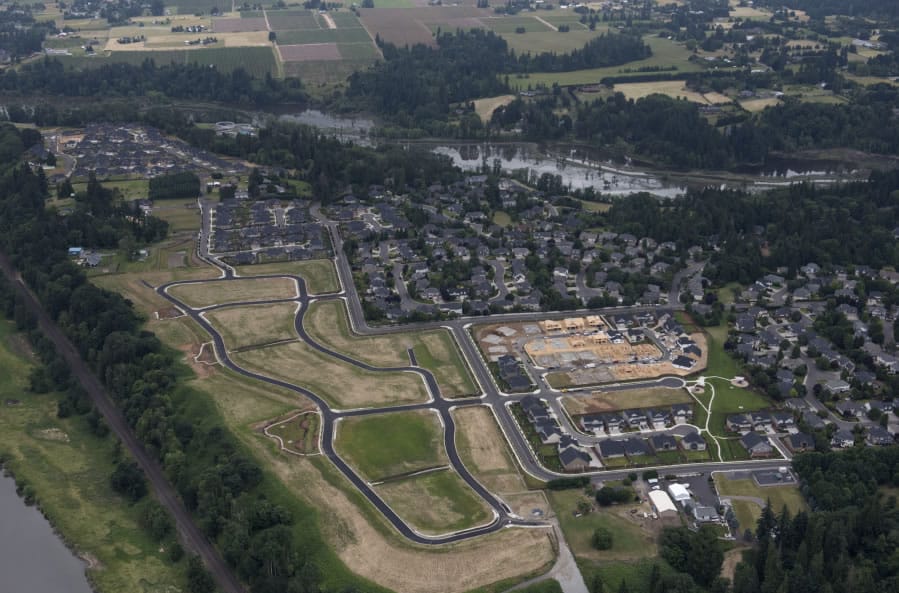Local Angle: Both single-family, multifamily units climb
Housing construction has boomed in Clark County through the first half of the year, according to the Building Industry Association of Clark County.
Permits for single-family and multifamily residences have grown significantly and people are remodeling more, according to the association, which represents companies in the construction industry.
The statistics "underscore the flurry of building activity here in the region," said spokeswoman Stephanie Frisch in an email.
"This is why the BIA believes so strongly that we must use the most accurate figures available when preparing for our region's future," said President Aaron Marvin, in a prepared statement. "We want to make sure everyone that wants to live out their American dream can purchase a home."
Single-family permits rose 19 percent through the first half of the year, from 722 in 2016 to 862 in 2017. The trend continued into summer, too, with permits issued rising from 117 in May to 185 in June.
Likewise, permits for residential remodeling rose 32 percent for the first half of the year. There were 300 such permits issued January to June 2016, compared with 395 so far this year, the association said.
So far this year there have been 30 permits issued to build multifamily projects, according to the association.
The statistics only represent building in unincorporated Clark County.
The rise could be rooted in many factors, said Jerud Martin, co-owner of Urban NW Homes. He suggested people are migrating here to escape rising housing costs in metropolitan areas, and more developable land is coming online.
"We came out of the recession, nobody could get a loan and there were only a few of us building at the time -- there weren't a lot of lots," he said. "Now that we're passed that, there's more properties being developed and more lots to build on."
Urban NW Homes itself is on pace to build close to 25 percent more single-family homes this year than last year, Martin said.
Clark County's population grew 2.17 percent from April 2016 to April 2017, the third fastest rate in the state, according to a recent report from the state Office of Financial Management.
The growth, Marvin said, is "far higher than the 1.26 percent growth figure used in the most recent Comprehensive Growth Management Plan" by the county.
— Troy Bryneslon



